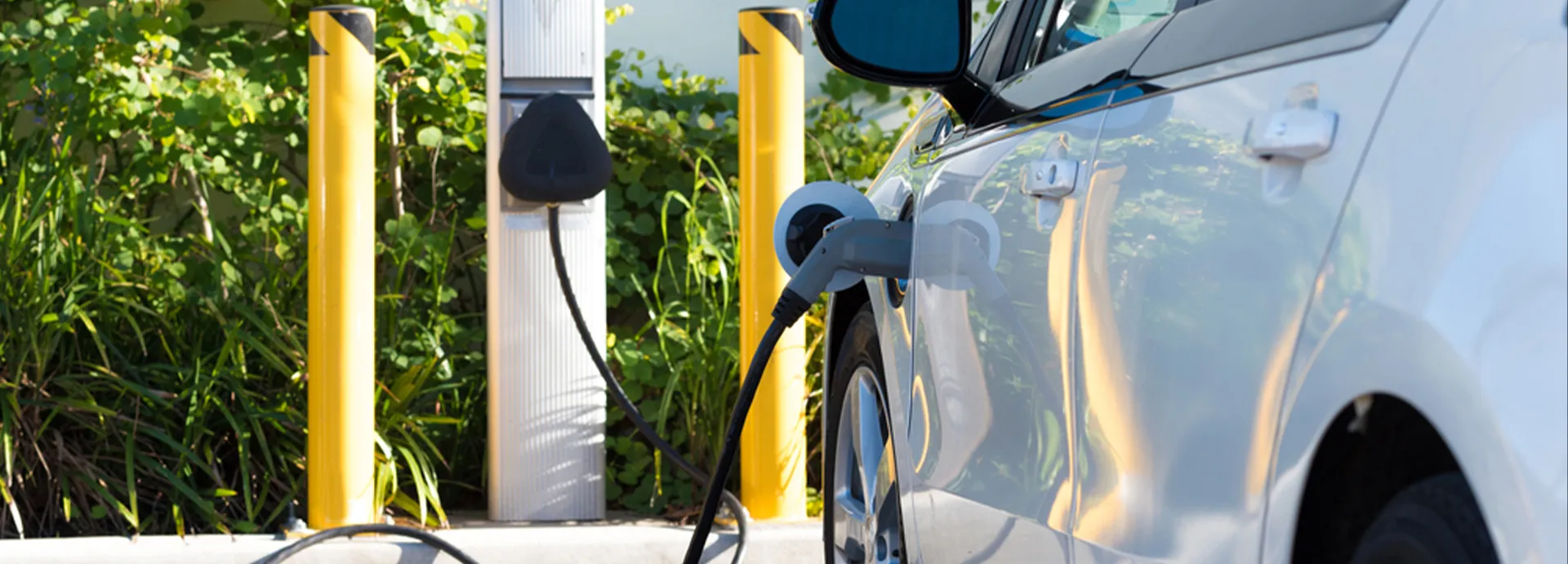Charging guide
How to charge
Level 1:
- Standardized connector.
- At home using a normal wall outlet; cable included with car.
- Slow charge rate; 3-5 miles per hour.
- Useful for drivers traveling 40 miles or less daily; level 2 preferred if available.
Level 2:
- Standardized connector.
- At home using a dedicated charging station.
- Medium charge rate; 15-30 miles per hour.
- Useful for drivers traveling 100+ miles daily.
DC fast charging:
- Three connector types: CCS, CHAdeMO, NACS.
- Just off the highway using dedicated high power stations.
- Fast charge rate; 150-400 miles per hour.
- Useful for long distance driving 300+ miles daily.
When to charge
- All electric vehicles have timers that let you set when the car charges.
- The best time to charge your electric vehicle is between 10 p.m. and 6 a.m. This is when renewable wind power peaks and there is typically more capacity in the Texas grid.
- You want to avoid charging late afternoons, 4 p.m. to 7 p.m., when there is typically less capacity in the Texas grid.
How full to charge
- For improved battery longevity maintain charge between 20 percent and 80 percent when possible.
- Normal daily driving charge to 80 percent.
- Before long trips charge to 100 percent.
- While on long trips don't charge to 100 percent at DC fast charging stations; only charge what you need to get to your destination, usually 80 percent or less.
- Don't let your battery sit at 0 percent or 100 percent for long periods of time.
Where to charge
- There are over 4,300 charging stations (and growing) in Texas and many stations charge multiple vehicles at one time.
- For daily driving, most charging will occur overnight at home or throughout the day at Level 2 and DC fast charge stations. Stations are usually located at offices, shopping malls, restaurants, and hotels.
- For highway driving, charging will happen at dedicated DC fast charging stations located along main highways. Drivers can choose from multiple networks based on the fast charging connector on their vehicle; most networks support multiple connector types at each station. Common networks include Electrify America, Tesla, EVgo, and ChargePoint.
- Like any trip you should plan ahead. Charging stations are connected to the web with apps that display station status, occupancy, cost, and charge rates.
- Helpful charging station maps and route planners for EV drivers:
Additional information
Financial
- The State of Texas offers a $2,500 rebate for buying an electric car. Texas EV Rebate Program; 2,000 applications accepted per year.
- Electric vehicle drivers save $500-$1,500 per year in refueling costs compared to gasoline.
- The annual registration fee for electric vehicles in Texas is $200.
- Auto manufacturers are estimating 40 percent reduction in maintenance costs over the life of electric vehicles.
- Many electric utility providers offer reduced rate plans for night time hours; this is when you should charge your car.
- Rebates exist for the installation of charging stations at homes and businesses; check with your local utility provider.
Maintenance
- Electric vehicles have fewer moving parts and typically require less maintenance than traditional vehicles.
- For example, the new electric F-150 truck is targeting 40 percent less maintenance costs over the vehicles lifetime.
- Normal items to keep track of are windshield wiper fluid and tire pressure.
- The batteries that power electric vehicles are maintenance free.
Efficiency
- Driving an electric vehicle in Texas is like driving a gasoline car that gets 76 mpg; depending on EV efficiency.
- Electric vehicles produce 60 percent fewer CO2 emissions compared to internal combustion vehicles.
- Electric vehicles get cleaner over time as the electrical grid gets cleaner.
